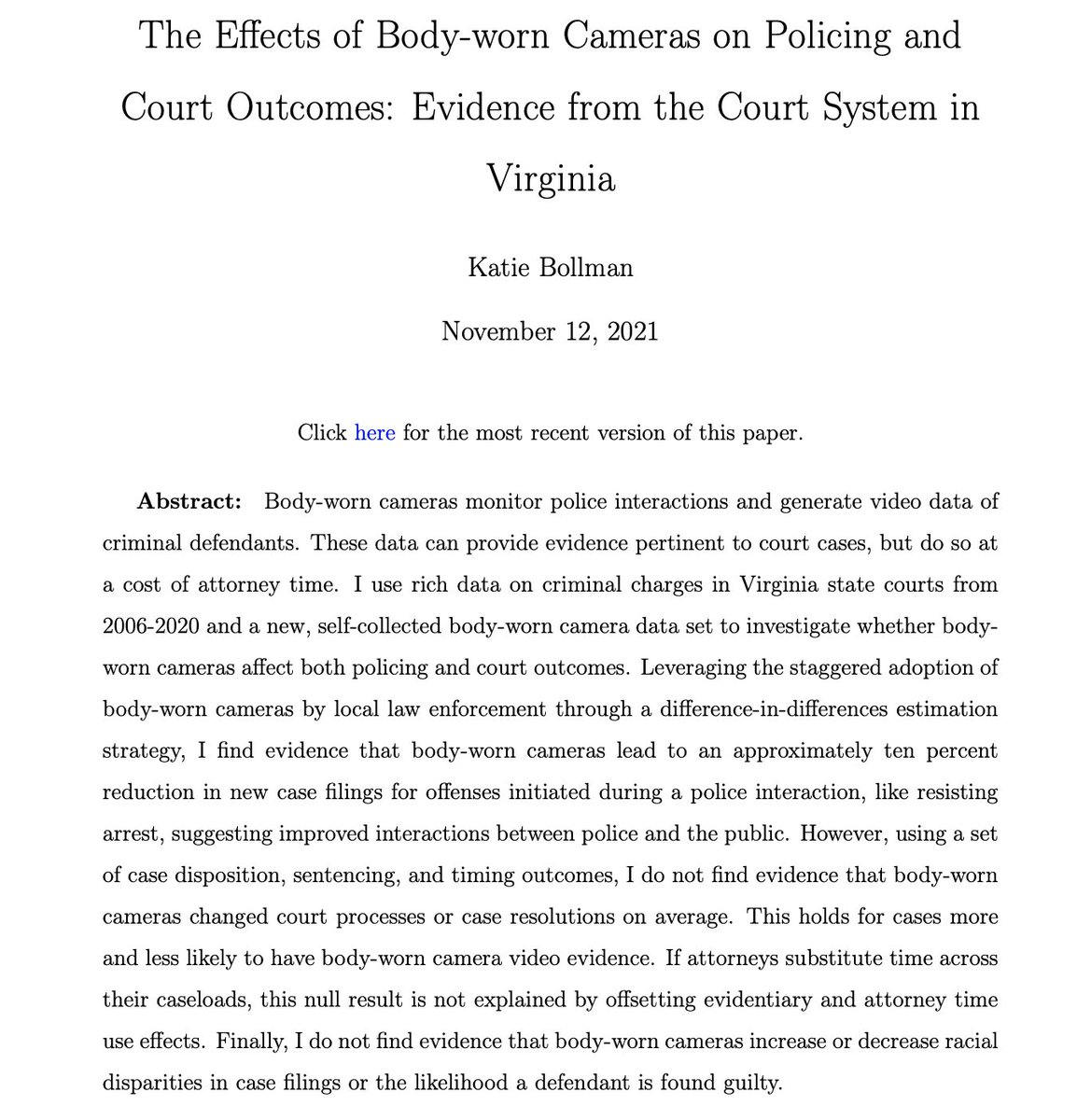There is a bunch of new research out there on the effects of body-worn cameras (BWCs) worn by police officers. Short thread summarizing four new papers 👇
Experimental evidence using precinct-level random assignment that BWCs reduced citizen complaints and increased the reporting of stops by NYC police officers by Anthony Braga, John MacDonald and James McCabe:
onlinelibrary.wiley.com/doi/abs/10.111…
onlinelibrary.wiley.com/doi/abs/10.111…

Evidence from the same experiment with the NYPD that BWCs do not improve satisfaction with police officers, based on a survey of people who have had contact with the police. Paper by Anthony Braga, John MacDonald and @lmbar16: link.springer.com/article/10.100… 

Using a survey experiment, @btregle, @jnixy and @JustinTPickett find that 1) police executives don't support laws that mandate the sharing of BWC footage w/ the public & 2) suspect race and armed status shaped executives' expectations of media coverage.
tandfonline.com/doi/full/10.10…
tandfonline.com/doi/full/10.10…

Research by @KathrynBollman finds that BWCs ▶️ 10% reduction in new case filings for offenses initiated during a police interaction but finds no effects on case disposition, sentencing or racial disparities.
github.com/katiebollman/W…
github.com/katiebollman/W…

There is another recent systematic review of BWCs by Cynthia Lum et al here: eprints.qut.edu.au/205611/
• • •
Missing some Tweet in this thread? You can try to
force a refresh










